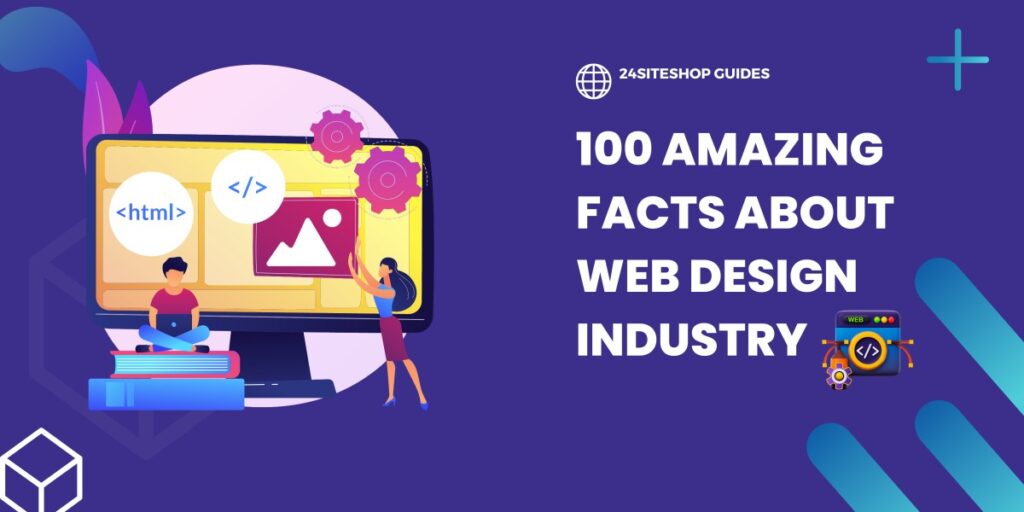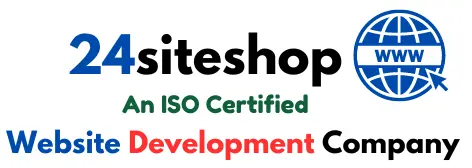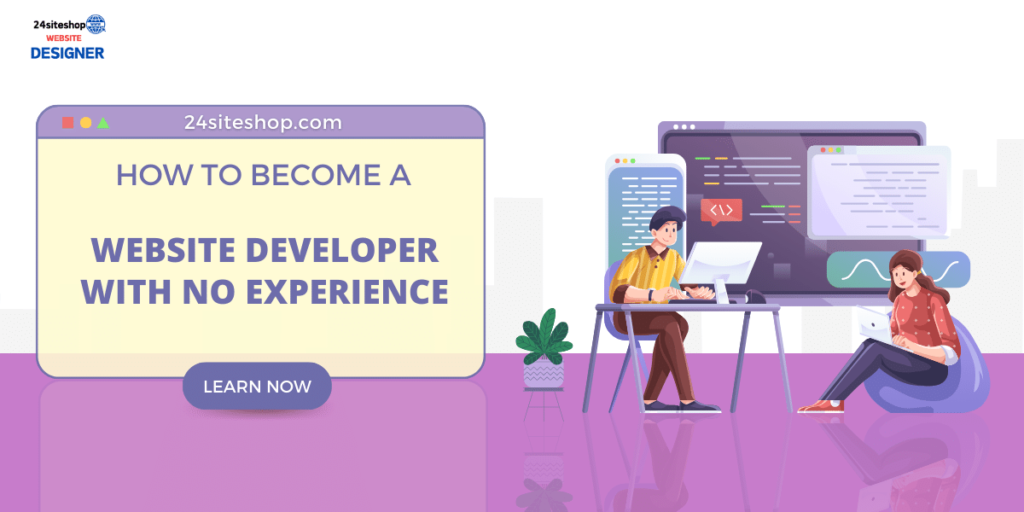
In the ever-evolving landscape of the digital realm, the web design industry stands as a dynamic and creative force, shaping the online experiences that millions encounter daily. From the inception of the World Wide Web to the present day, web design has undergone a remarkable transformation, incorporating technological advancements, aesthetic trends, and user-centric principles. As we delve into the intricacies of this fascinating field, join us on a journey through “100 Amazing Facts About Web Design Industry.”
From the fundamentals of responsive design to the avant-garde techniques pushing the boundaries of user interaction, this comprehensive exploration aims to unravel the diverse facets that constitute the web design tapestry. Whether you’re an aspiring web designer, a seasoned developer, or simply someone intrigued by the digital landscapes you traverse, this compilation of facts is designed to inform, inspire, and celebrate the artistry and science behind web design.
As we unravel these 100 facts, each accompanied by a succinct description, we’ll uncover the methodologies, trends, and innovations that have shaped websites into the interactive and visually stunning platforms we know today. Join us in this deep dive into the world of web design, where creativity meets functionality, and where each line of code contributes to an immersive and seamless online experience.
So, fasten your seatbelts as we embark on a journey through the fascinating universe of web design, unraveling the secrets, trends, and intricacies that make the digital world not only accessible but aesthetically captivating. Welcome to “100 Amazing Facts About Web Design Industry” — your passport to the heart of digital creativity!
Table of Contents
Why You Should Know Facts About Web Design Industry :
Understanding the intricacies of the web design industry is more than a professional advantage; it’s a key to unlocking the full potential of the digital realm. Whether you’re a seasoned web developer, a business owner, or someone simply navigating the vast online landscape, knowledge about web design is akin to possessing a map through a constantly evolving digital world. It empowers professionals to create more engaging, user-friendly interfaces, aids businesses in establishing a strong online presence, and allows individuals to navigate the internet with a discerning eye. As technology continues to advance and user expectations evolve, staying informed about the facts and trends within the web design industry is not just beneficial — it’s a strategic investment in mastering the language of the digital age.
Here are the Amazing 100 Facts About Web Design Industry :
- Responsive Design: Websites designed to adapt to various devices and screen sizes, providing a seamless user experience.
- Web 1.0 vs. Web 2.0: Web 1.0 was static, while Web 2.0 introduced dynamic content and user interaction.
- Color Psychology: Web designers leverage color psychology to influence user emotions and actions on a website.
- Typography Matters: The choice of fonts and typography significantly impacts user readability and engagement.
- Whitespace Importance: Strategic use of whitespace enhances website readability and aesthetics.
- User Experience (UX): Focus on creating websites that offer a positive and efficient experience for users.
- User Interface (UI): UI design involves creating visually appealing and intuitive interfaces for users.
- A/B Testing: Web designers frequently use A/B testing to optimize website elements and improve performance.
- CMS Platforms: Content Management Systems like WordPress, Drupal, and Joomla simplify website development and management.
- Wireframing: Creating a visual guide to represent the structure and functionality of a website before development.
- Parallax Scrolling: A design technique where background images move slower than foreground images, creating a 3D effect.
- Flat Design: Minimalistic design with a focus on simplicity, clean lines, and vibrant colors.
- Skeuomorphism: Design elements that mimic real-world objects to make interfaces more familiar to users.
- Infinite Scroll: Continuous scrolling without pagination, popular in social media feeds.
- Scrolljacking: Controversial technique involving manipulating scrolling to create unique user experiences.
- Above the Fold: Important content placed at the top of a webpage without the need for scrolling.
- Hamburger Menu: A compact menu design with three horizontal lines, resembling a hamburger.
- 404 Page Creativity: Custom 404 error pages can turn a negative experience into a positive one with creative design.
- Loading Animations: Unique loading animations keep users engaged during page load times.
- Microinteractions: Subtle design elements that enhance user interactions, such as button animations.
- F-Pattern Layout: Eye-tracking studies show users often scan content in an F-shaped pattern.
- Golden Ratio in Design: The application of the golden ratio for aesthetically pleasing proportions in design.
- SVG Graphics: Scalable Vector Graphics offer resolution-independent, high-quality images.
- HTTPS Security: Secure Sockets Layer (SSL) encryption is crucial for website security and SEO.
- Image Compression: Optimizing image sizes improves website speed and user experience.
- Lazy Loading: Delaying the loading of non-essential content until it’s needed, improving page load times.
- Web Accessibility: Designing websites to be inclusive and accessible to users with disabilities.
- Progressive Web Apps (PWAs): Combine the best features of websites and mobile apps for a seamless user experience.
- Grid Layouts: Designing websites using a grid system for alignment and consistency.
- HTTPS as a Ranking Factor: Google favors secure websites in search engine rankings.
- Sticky Navigation: Navigation menus that remain visible as users scroll down a webpage.
- Whitespace as an Element: Purposeful use of whitespace can enhance design and user focus.
- Gamification in Web Design: Applying game elements to non-game contexts for user engagement.
- Card Design: Information presented in small, digestible “cards,” popularized by social media.
- Dynamic Content: Websites that dynamically update content based on user interactions.
- Gradient Designs: The resurgence of gradient backgrounds and elements in modern web design.
- Browser Developer Tools: Essential for debugging and optimizing websites during development.
- Web Fonts: Expanding font options beyond system defaults with the use of web fonts.
- Scroll Anchoring: Preventing unwanted scrolling shifts, improving user experience.
- Dark Mode Design: Offering a dark color scheme for reduced eye strain in low-light conditions.
- Inclusive Design: Ensuring websites are accessible to a diverse range of users.
- Voice User Interface (VUI): The integration of voice commands and responses in web design.
- Neuromorphic Design: Mimicking the physical world in digital interfaces for a natural user experience.
- CSS Grid: A two-dimensional grid system for layout design in CSS.
- Lazy Loading Fonts: Loading fonts only when they are needed to speed up page load times.
- Retro Design Elements: Incorporating nostalgic design elements for a vintage feel.
- Sticky Footer: A footer that remains fixed at the bottom of the page as users scroll.
- Image Carousels: Sliding displays of images or content for a visually appealing homepage.
- Mobile-First Design: Designing for mobile devices first and then scaling up for larger screens.
- Website Speed Optimization: Faster websites improve user experience and SEO rankings.
- Video Backgrounds: Using videos as website backgrounds for a visually striking effect.
- Interactive Infographics: Infographics that allow user interaction for a more engaging experience.
- Web Design for Wearables: Adapting design principles for smartwatches and other wearable devices.
- CMS Customization: Tailoring CMS platforms to meet specific design and functionality requirements.
- Conversion-Centered Design: Designing with a focus on increasing conversion rates.
- Scalable Design Systems: Consistent and scalable design components for large websites.
- Multilingual Websites: Designing websites to accommodate users from different language backgrounds.
- Global Navigation: Navigation menus that remain consistent across various pages of a website.
- Heatmaps for Optimization: Analyzing user behavior using heatmaps to optimize design elements.
- Website Prototyping: Creating interactive prototypes to test and refine design concepts.
- Geometric Shapes in Design: The use of circles, squares, and triangles for visual appeal and structure.
- Dynamic Page Transitions: Seamless transitions between pages for a cohesive user experience.
- Whitespace and Readability: Proper use of whitespace enhances text legibility and comprehension.
- Interactive Forms: Forms that provide real-time feedback and validation for a smoother user experience.
- Data Visualization: Representing complex data sets visually for better understanding.
- Live Chat Integration: Adding live chat functionality for instant user support.
- Branding Consistency: Ensuring design elements align with and reinforce the overall brand identity.
- E-commerce Checkout Optimization: Streamlining the checkout process for higher conversion rates.
- Multimedia Integration: Incorporating images, videos, and audio for a rich multimedia experience.
- Dynamic Page Titles: Changing page titles based on user interactions for SEO and user clarity.
- Emotional Design: Eliciting emotional responses through design elements for user engagement.
- SEO-Friendly URLs: Crafting URLs that are both user-friendly and optimized for search engines.
- Web Design Trends: Staying updated on the latest design trends for a modern look.
- Typography Hierarchy: Assigning different fonts and sizes to emphasize key content.
- Rapid Prototyping Tools: Utilizing tools for quick and efficient design prototyping.
- Browser Compatibility Testing: Ensuring websites function correctly across different web browsers.
- Collaborative Design Tools: Facilitating teamwork with tools that allow multiple designers to work together.
- 404 Page Optimization: Making 404 pages informative and guiding users back to relevant content.
- Mobile Optimization: Prioritizing mobile-friendly design for the growing number of mobile users.
- Web Design Certifications: Professional certifications for validating web design skills.
- Custom Cursors: Adding unique cursor designs for a personalized touch.
- Dynamic Color Schemes: Changing color palettes based on user interactions for a dynamic look.
- Interactive Maps: Embedding maps with interactive features for enhanced user engagement.
- WebVR: Virtual Reality experiences integrated into web design for immersive content.
- Image Alt Text: Descriptive text for images to improve accessibility and SEO.
- Dynamic Content Loading: Loading additional content dynamically as users scroll.
- Designing for Touchscreens: Adapting layouts and interactions for touchscreen devices.
- CSS Variables: Using variables in CSS for easier style management.
- 404 Page Analytics: Analyzing user behavior on 404 error pages for improvements.
- Web Design Communities: Engaging with online communities for knowledge sharing and networking.
- Dynamic Backgrounds: Changing background images or colors based on user interactions.
- Hover Effects: Adding subtle animations or color changes when users hover over elements.
- Mobile-Optimized Images: Serving different image sizes based on the user’s device.
- CSS Flexbox: A layout model for designing complex web layouts with ease.
- Progress Bars: Visual indicators of loading or completion for user feedback.
- Chatbots in Web Design: Integrating chatbots for instant user assistance.
- Web Design Conferences: Attending conferences for staying updated on industry trends.
- Web Design Podcasts: Listening to podcasts for insights and discussions on web design.
- Dynamic SEO Elements: Optimizing meta tags and content dynamically for SEO.
- Continuous Learning: The web design industry evolves; staying updated is essential for success.
Conclusion :
In conclusion, our exploration of “100 Amazing Facts About Web Design Industry” unveils the intricate tapestry of an ever-evolving discipline that plays a pivotal role in shaping the digital landscape. From the foundational principles of responsive design to the avant-garde techniques defining the future, these facts underscore the dynamic nature of web design. As we reflect on the significance of these insights, it becomes clear that a profound understanding of web design is not merely a professional asset but a gateway to unlocking the true potential of online experiences. By staying abreast of industry trends, embracing innovation, and appreciating the delicate balance between aesthetics and functionality, we position ourselves to create, navigate, and appreciate the digital realms that have become integral to our daily lives. In a world where first impressions are often digital, the knowledge gleaned from these facts becomes a compass guiding us towards creating immersive, accessible, and visually captivating online spaces. So, let these facts serve as a catalyst for continued exploration and innovation in the exciting and ever-evolving world of web design.

